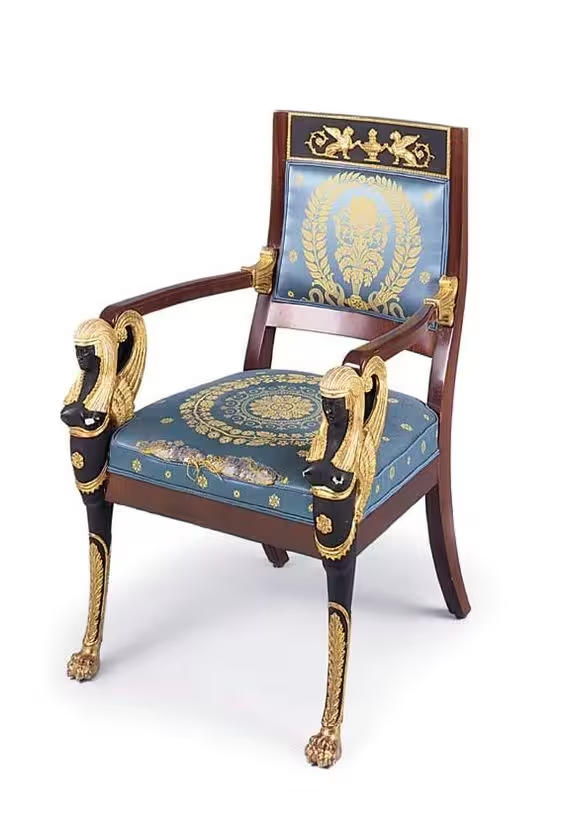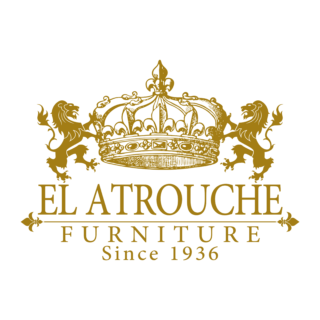Louis le Juste Louis XIII
Louis XIII furniture style was geometric in appearance yet simple with severe shapes, upholstered seating ,where veneer, carved, turned wood and moldings were used. There was a tendency toward the architectural; its forms being restrained and often massive.
Frames were decorated with silvered nails to depict in charming engravings of French interiors by many artists of the period. Tall cupboards, full dressers, and tables with a varying number of legs were all extremely structured. Chairs were given arms, and Cabinets were common.

Louis Le Juste
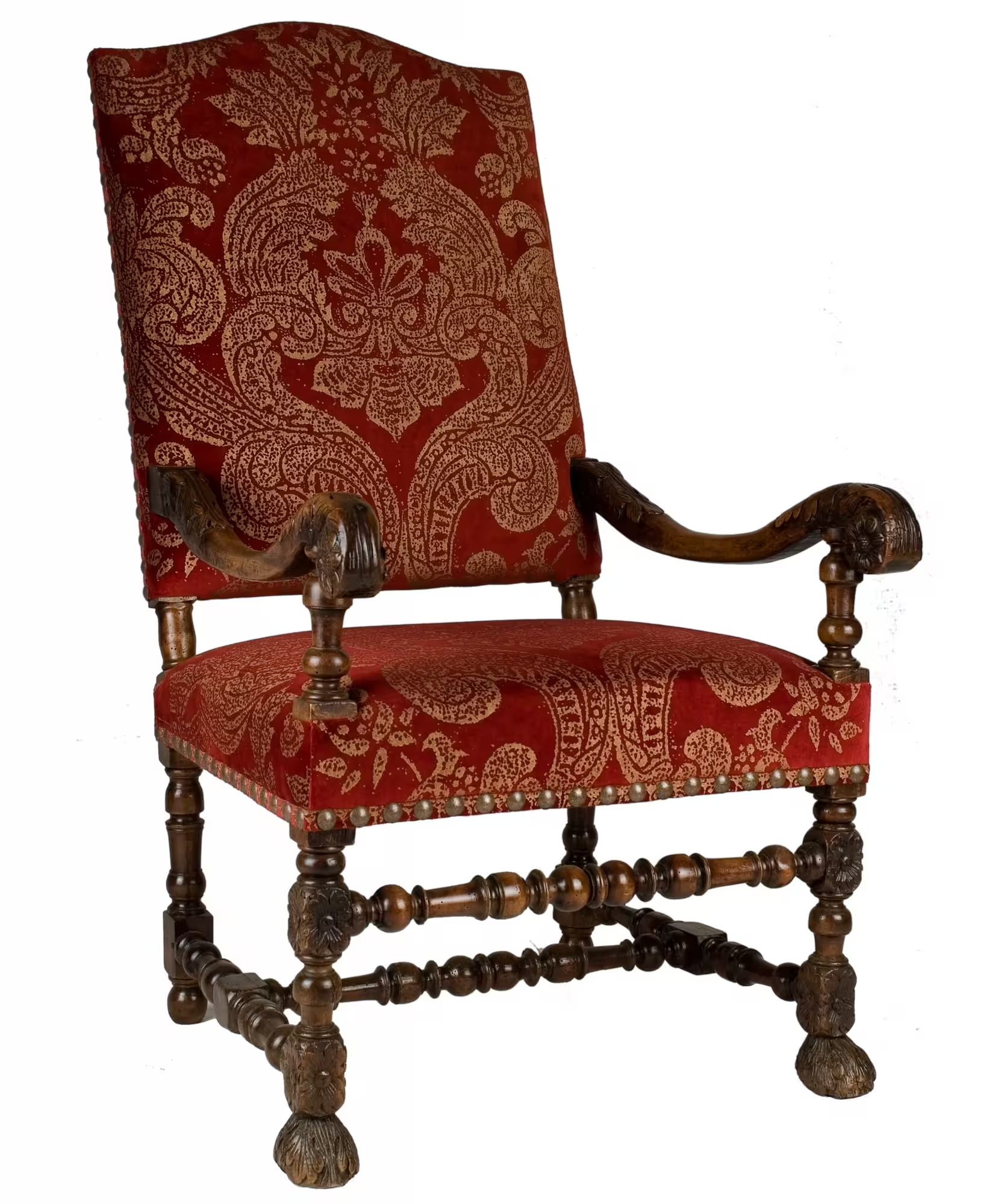
Louis XIII Bergere
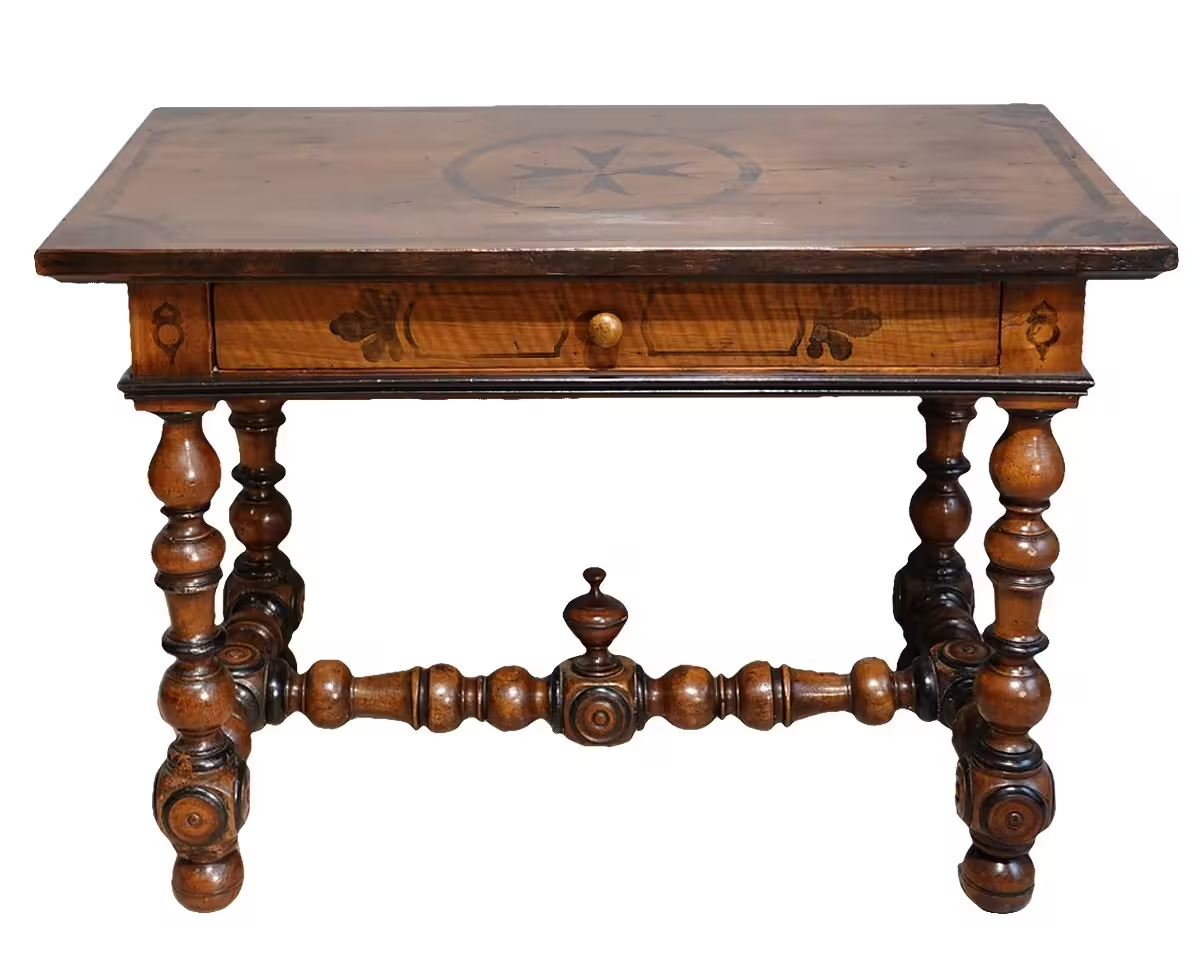
Louis XIII Table
Louis Dieudonné Louis XIV
Louis XIV furniture style was a development of his father’s Louis XIII style, with an influence of the Italian bought by Cardinal Mazarin.
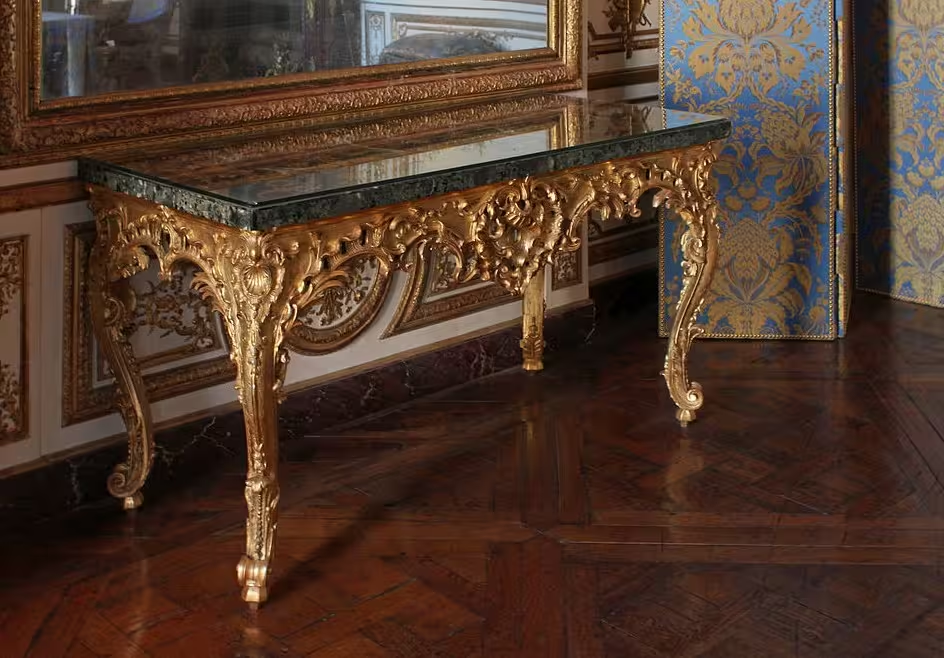
Louis XIV style rooms were characterized by massive cabinets, including columns, frontons, pilasters, balustrades, niches and other decoration. The cabinets matched the carved wood paneling known as lambris and sculpted ceilings.
The four legs of chairs and tables were connected for support by a cross beam under the chair in the form of an ‘H’, which evolved into an ‘X’. The feet were either en gain (en blasture), or geometric and tapering, or en console, with a curved ‘S’ form.
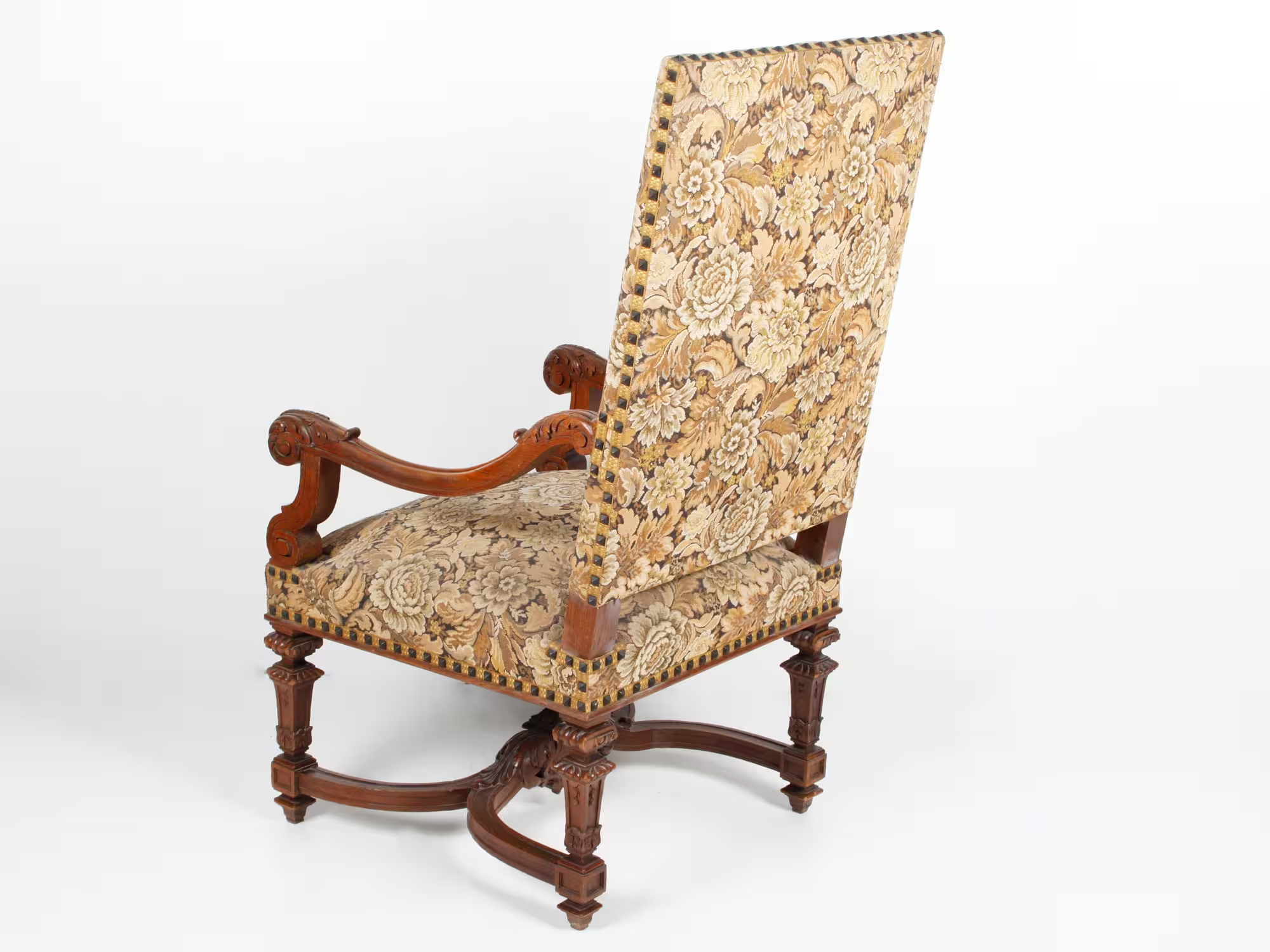
Armchairs appeared with high backs, made with pieces of bois tourné, cut in a spiral form.The fleur-de-lis was used.
Cabinets, tables and chairs were also geometric, but with a symmetrical design, to enhance balance and majesty. The sun was the motivation behind the royal designs.
Moldings remained thick. Motifs of human faces, gods, bearded fauns, nymphs, goddesses, allegories, arabesques, cornucopia and foliage abounded. Gilded bronze decoration was popular.
Louis capet Louis XV
Louis XV furniture style was characterized by curved forms, lightness, comfort and asymmetry. It employed marquetry, using inlays of exotic woods of different colors. It also fused usefulness with elegance.
New items appeared in Louis XV : chiffoniers, writing desks with flaps, card tables and roll-top desks ,dressing tables, chairs with short armrests, marquise (basically an armchair expanded to seat two persons) ,and the chaise longue (an armchair with a lengthened seat to support the legs)
Chairs were featured with curved legs, floral decorations, comfortably padded seats and backs, and deliberately asymmetrical shapes.
Bergere had a low seat with added padded wings above the arms on the sides of the back which protected the head against drafts, which also can be easier to take naps.
Louis XV furniture was designed not for the vast palace state rooms of the Versailles of Louis XIV, but for the smaller, more intimate salons created by Louis XV and by his mistresses Madame de Pompadour and Madame du Barry
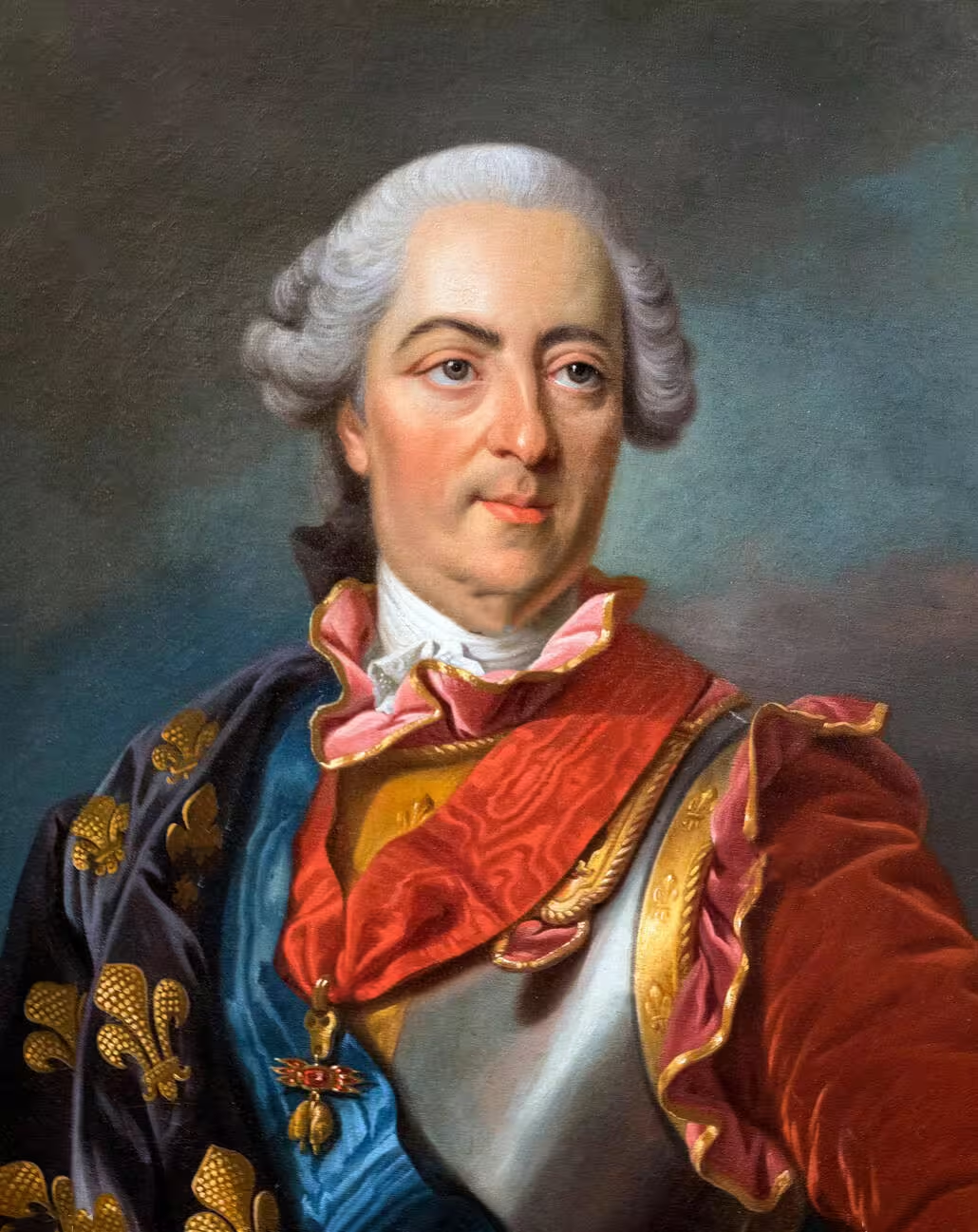
Louis the Beloved

Louis XV bergere

Louis XV table
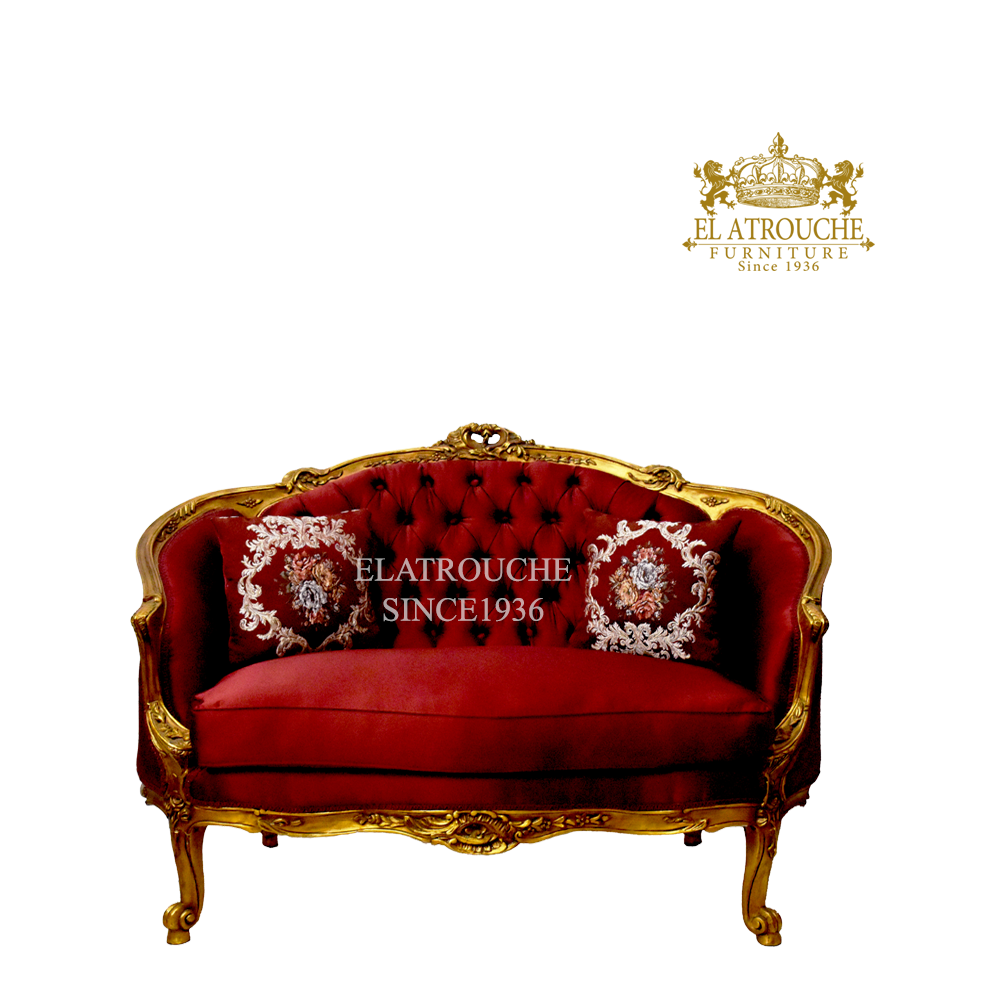
Louis XV Marquise
Louis capet Louis XVI
Louis Capet ruled France after his grandfather Louis XV.
Louis XVI furniture is characterized by Greco-Roman influence, straight lines, classical motifs like fluting, and richly carved details,chairs backs are oval shaped and straight and have fluted legs.
Beds are square or rectangular, with four high columns or semicercle attached to wall supporting a canopy called the sky ,or ciel.
Louis XVI’s design has been influenced most of the time by the discovery of several important relics in the Herculaneum and Pompeii
This style was characterized by elegance and neoclassicalism,Much of it was designed and made for Queen Marie Antoinette for the new apartments she created in the Palace of Versailles, Palace of Fontainebleau
Ornamentation was also minimalist, symmetrical and antique themes were an important inspiration. Proportions and volumes were equilibrated, simplicity of forms was back. Mahogany was the wood used, used for its solid color and for the uniqueness of veins.
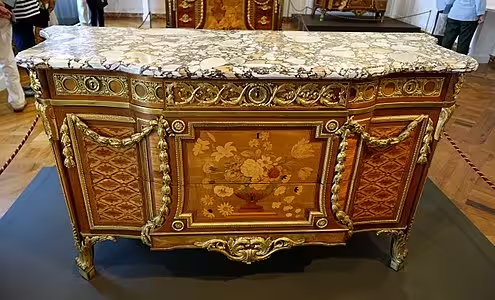
Louis XVI bayu

Louis XVI Console
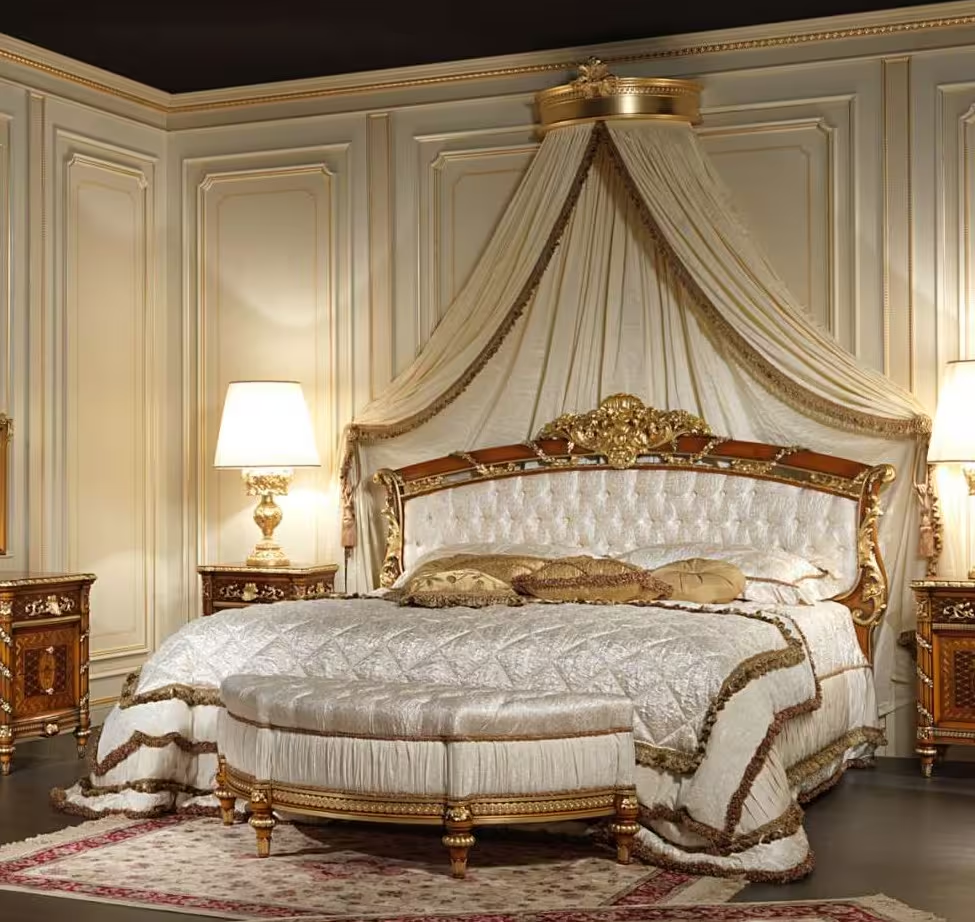
Louis XVI bed

Louis XVI Chair
Louis Philippe
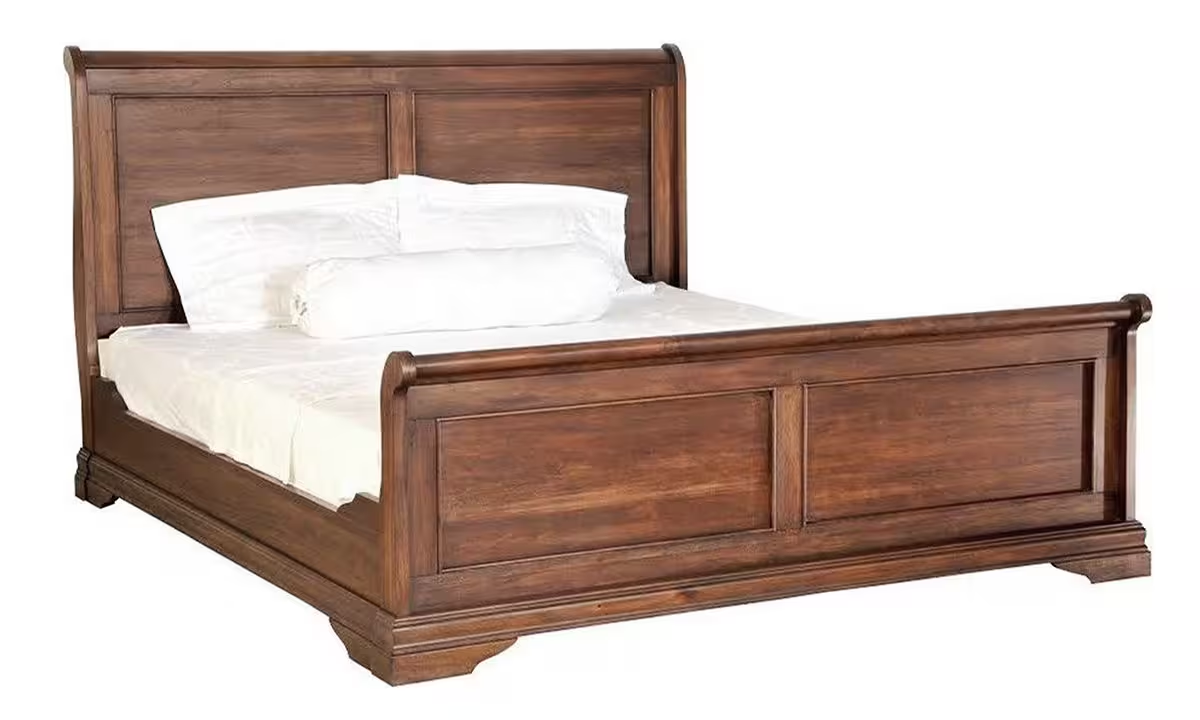
Bedroom: the best-known signature piece from this style is the sleigh bed. The headboard is higher than the footboard, made with dark woods.
Chairs: Legs were round and curved. Backs were curved slightly inward and the padded arms curved around and enfolded the person sitting.
Commode: Rectangular shaped, solid and heavy, with a marble top. The front area was covered with a thin layer of light wood, often with an inlay of designs of dark wood, rosewood or mahogany, designed with patterns of oak leaves, palmettes, or floral decoration. Sometimes the coloring was reversed; the darker woods were used to cover the furniture, with lighter woods like sycamore, holly and lemon wood used for inlays.
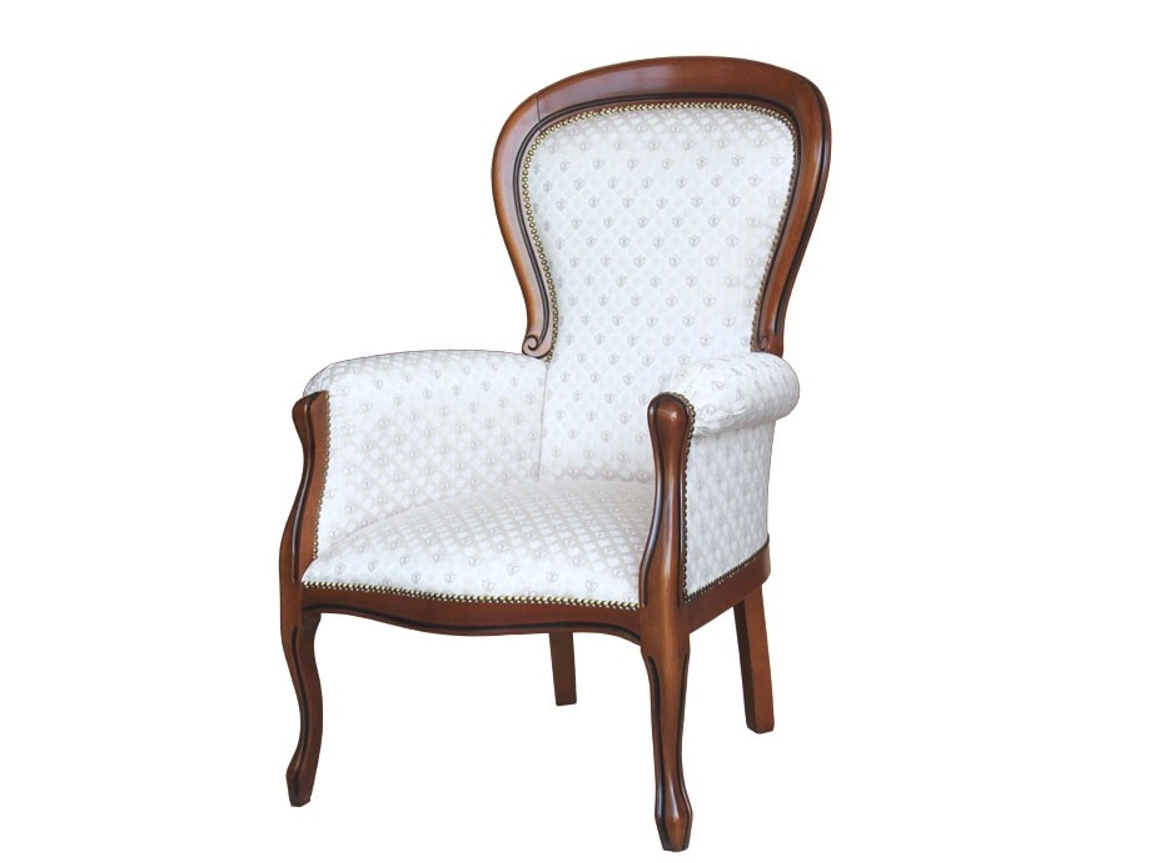
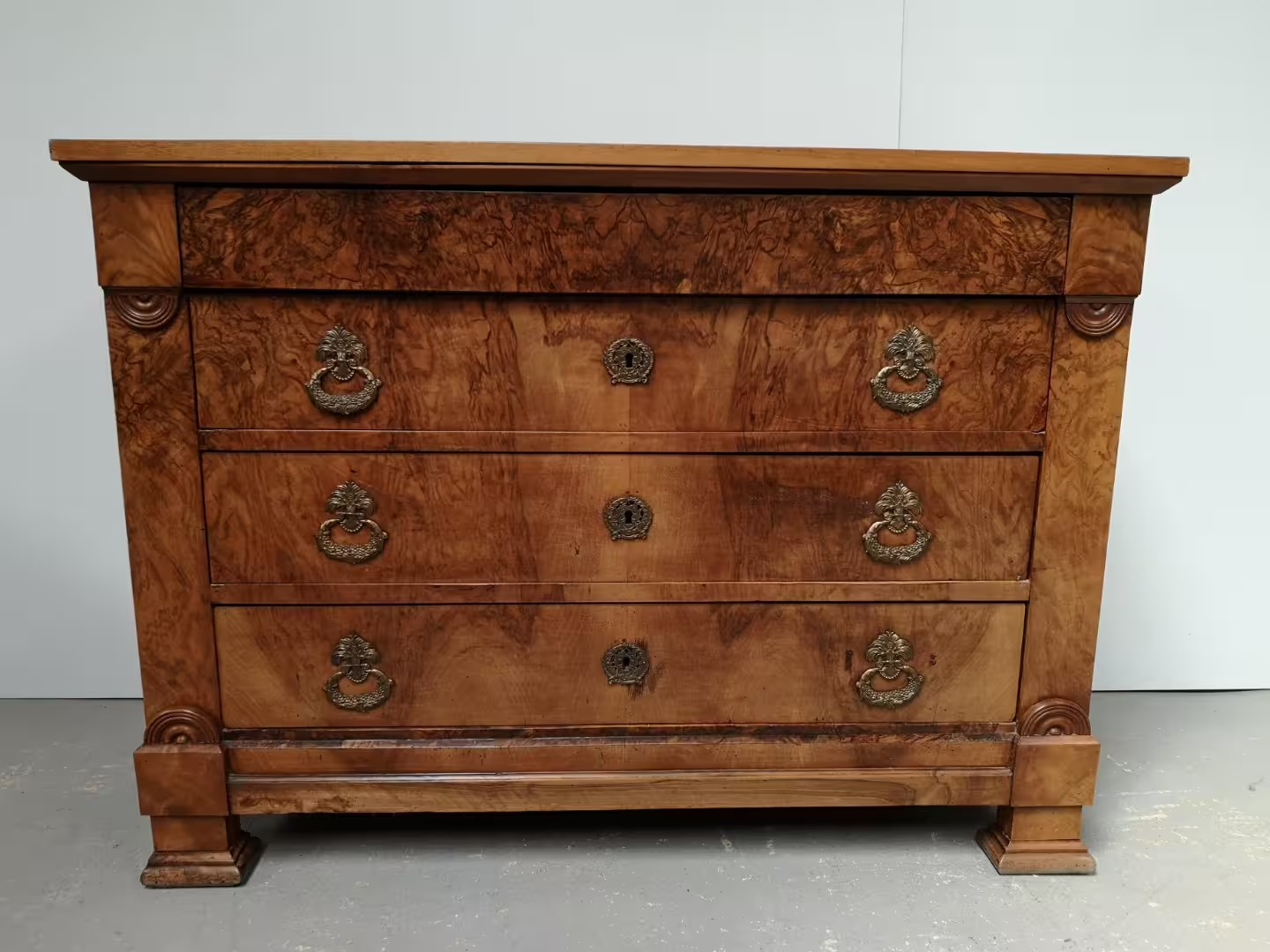
Napoleon Bonaparte French Empire
The public authority directed rules and prerequisites to control the style of the craftsmen production. Furniture makers had to adapt to the Emperor’s preference for massive components and his will to express power so they designed accordingly.
This style was characterized by a rigid layout with a basic geometric style. It was accompanied by big dimensions with many decorative designs. The designs were influenced by lions, eagles and deities. Some pieces also had sphinxes, palm leaves and other Egyptian-inspired motifs. Furniture items were symmetrical, where each side replicated the same design. The craftsmen motivation behind their designs was war and the Classical World.

Napoleon Bonaparte

French Empire Fauteil
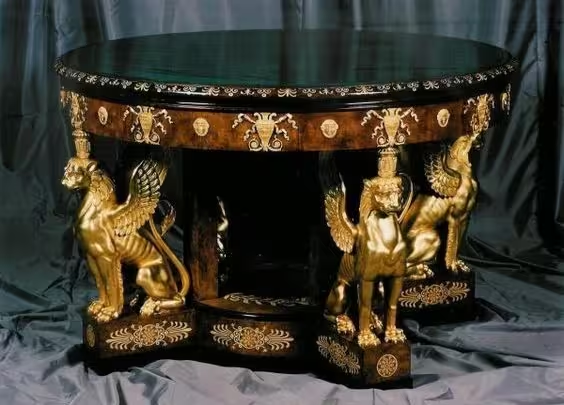
French Empire Table
